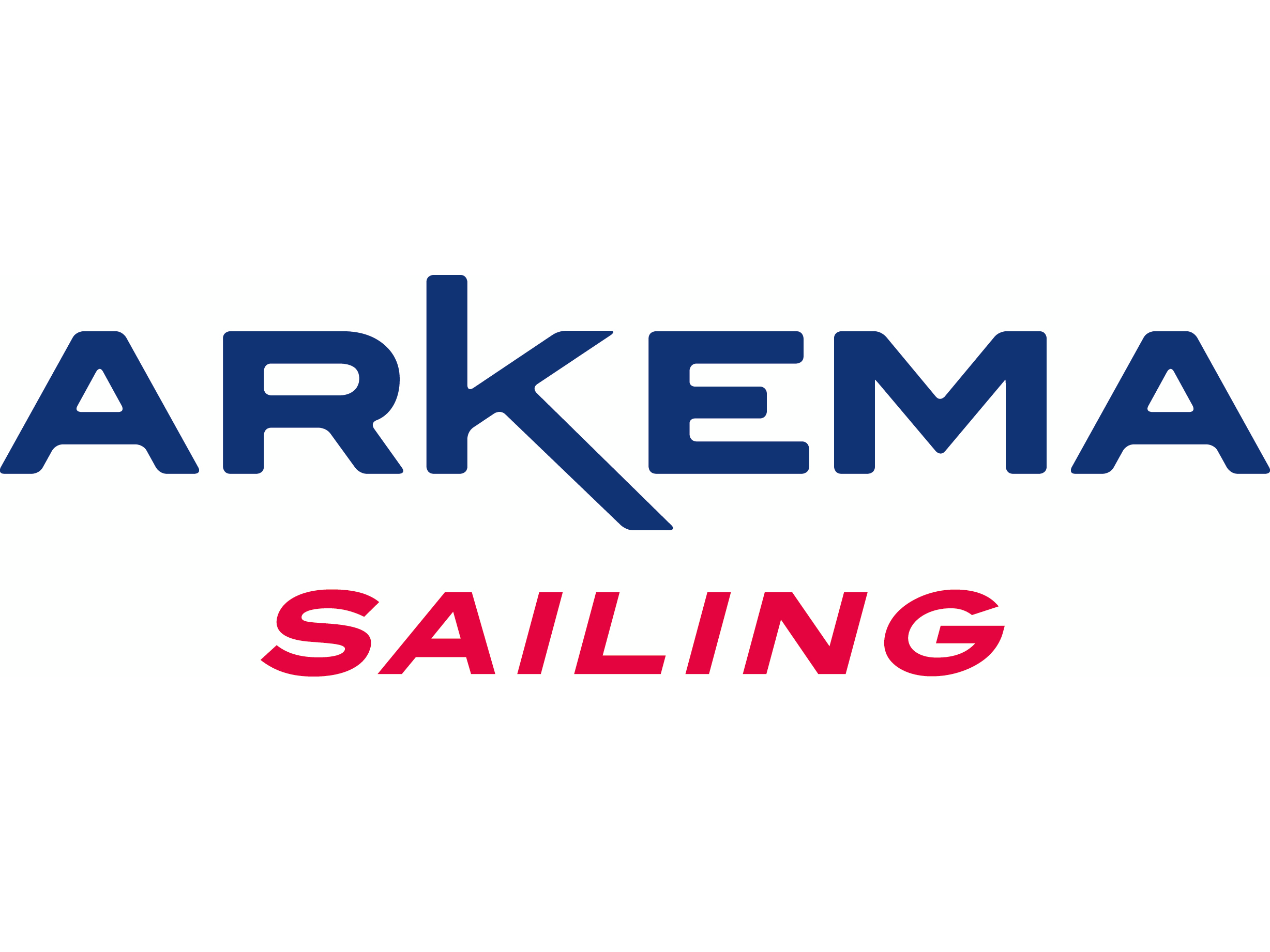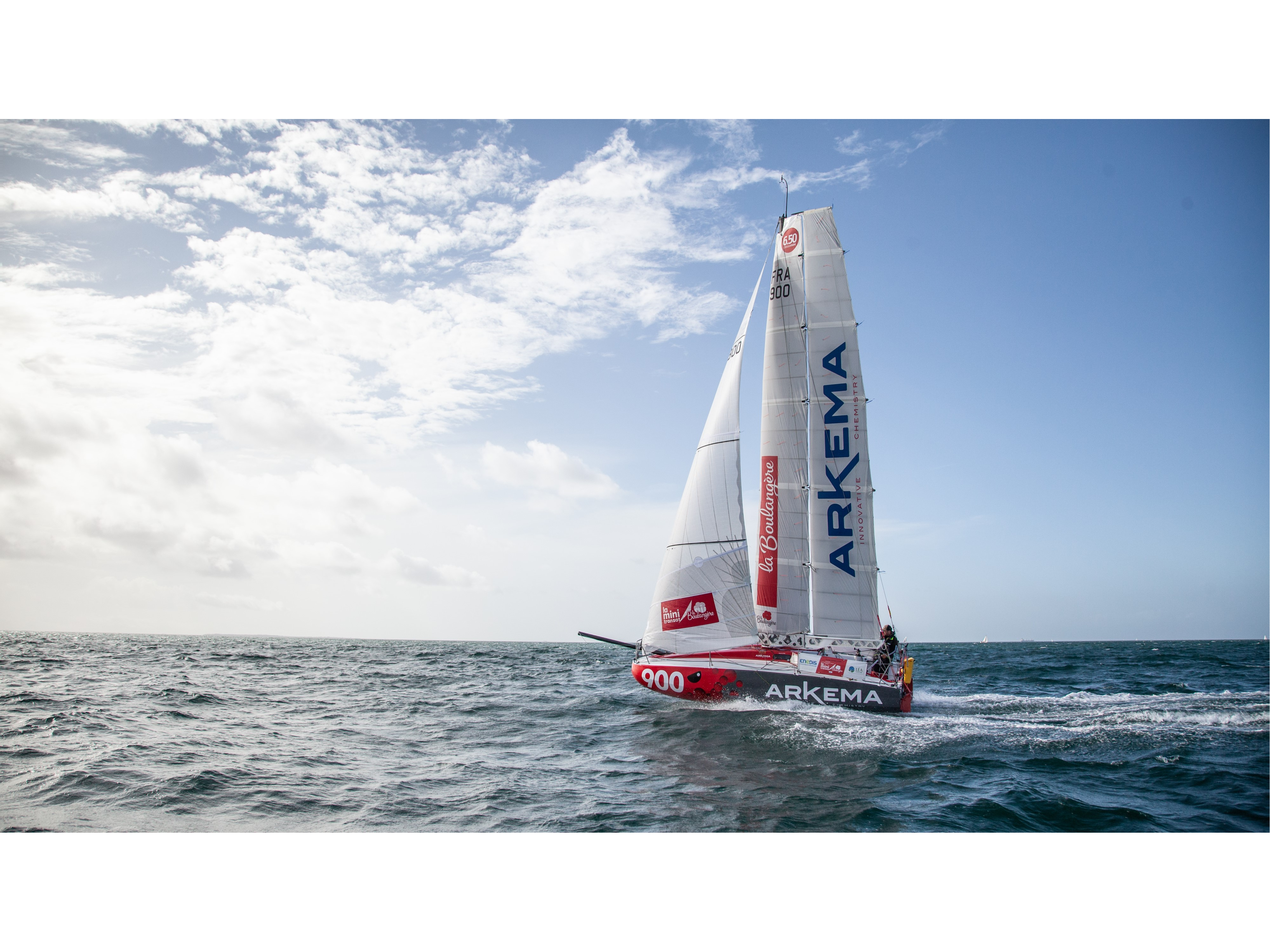Initially scheduled for 22 September, the start of the Mini Transat - La Boulangère race has had to be deferred several times due to complex weather conditions jeopardizing the competitors’ safety. After three successive postponements and a 15-day wait, the start of this solo transatlantic race is at last looming large for the young 23 year old skipper Raphaël Lutard and his innovative prototype, the Mini 6.50 Arkema 3. So, at 10.30 h on Saturday 5 October, the competitors will be setting off to tackle the first leg of their race: a 1,400 nautical mile course between La Rochelle and Las Palmas de Gran Canaria.
Raphaël Lutard talks to us just a few hours from the much anticipated start.

What has it been like to have the start postponed several times?
Raphaël Lutard: I haven’t been concerned about it too much. I understand the decision made by the race directors as we have had several lows in the last 10 days, not to mention hurricane Lorenzo! There was no point in being in two minds about it as the start would be given whatever happens. You just needed to be patient! So, after waiting in La Rochelle and making the most of it to go on fine-tuning the boat’s preparation, I went back to the Bay of Arcachon for a few days’ rest. I came back on Thursday and I’m now getting ready to sail off on Saturday: careening, supplies of fresh food, and of course the weather…
What’s the weather forecast for this first leg?
We should have light winds on the first day, then we’ll have a front to cope with on the first night. After a small zone of high pressure off Cap Finisterre, we should then be sailing downwind for the second half of the course. With wind speed forecasts for now of 30 knots on the weather charts and 35 knots in gusts, sailing down from Cape Finisterre to Las Palmas could be very fast!

What’s your strategy for this first leg?
The first part of this leg will be upwind in light winds, which is not ideal for my boat. My aim is not to lag too far behind the head of the fleet as we sail out of the Bay of Biscay because I know that the boat is capable of clocking up great speeds from then on, sailing downwind.
Can you tell us a bit more about a typical day on board the Arkema 3?
I start my day at sunrise with breakfast. I go round the boat to make sure everything’s OK, and the rest of the morning is spent adjusting or fine-tuning, at the helm or working on the navigation charts. Generally I take a 20 minute break after lunch before my BLU session at 15h UCT. It’s an important one-hour spot in the day. We receive daily news about the fleet as well as important national and international information; followed by weather forecasts in French and in English, and finally the rankings in distance from the finish line for the series and prototype boats. If you want to know what their position is, you need to fetch your compass and map and locate them within a rather large circle!
After this session, I work on the strategy for the next 24 hours and check the positioning of certain competitors. I record everything in a small logbook to chart speeds and progress day after day.
After another 20 minute break and the evening meal, it’s off to another typical night alternating short sleep times with periods dedicated to tweaking and maneuvering!
sailing downwind.
